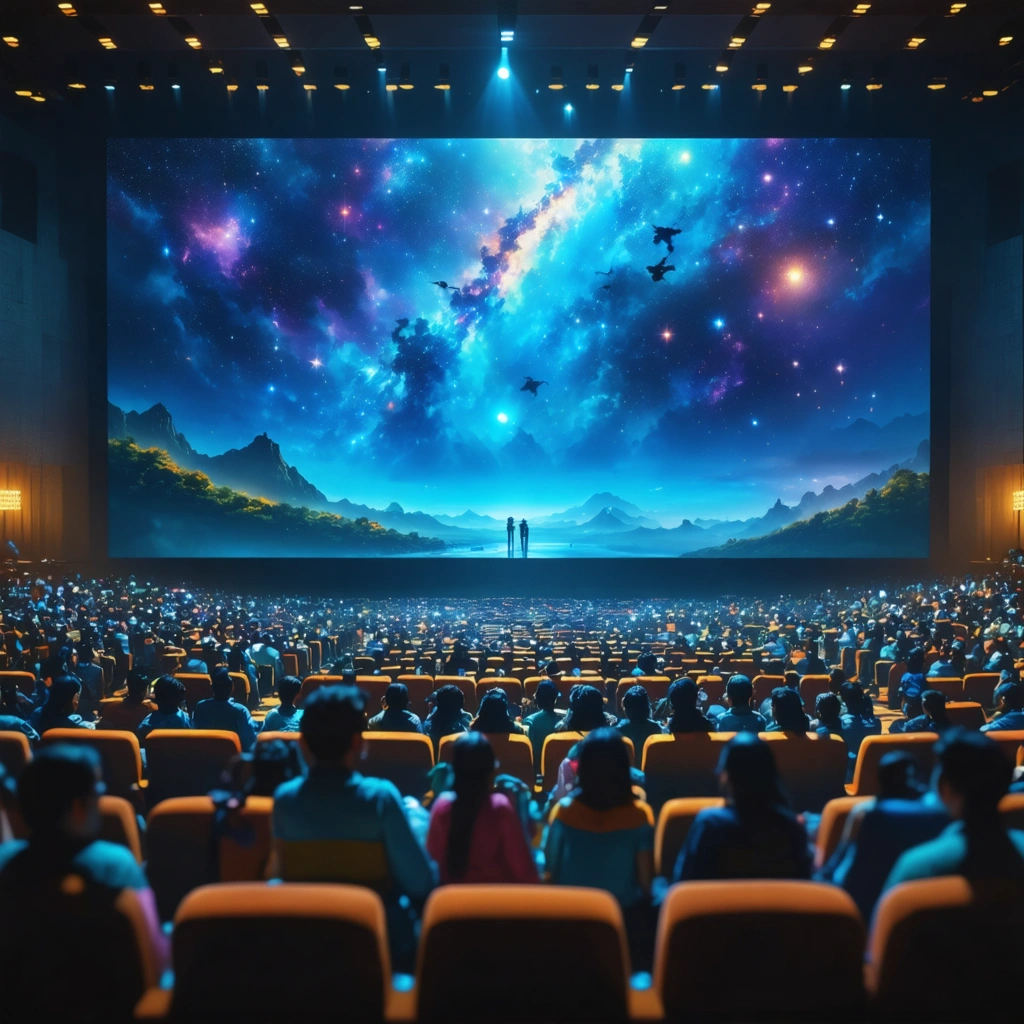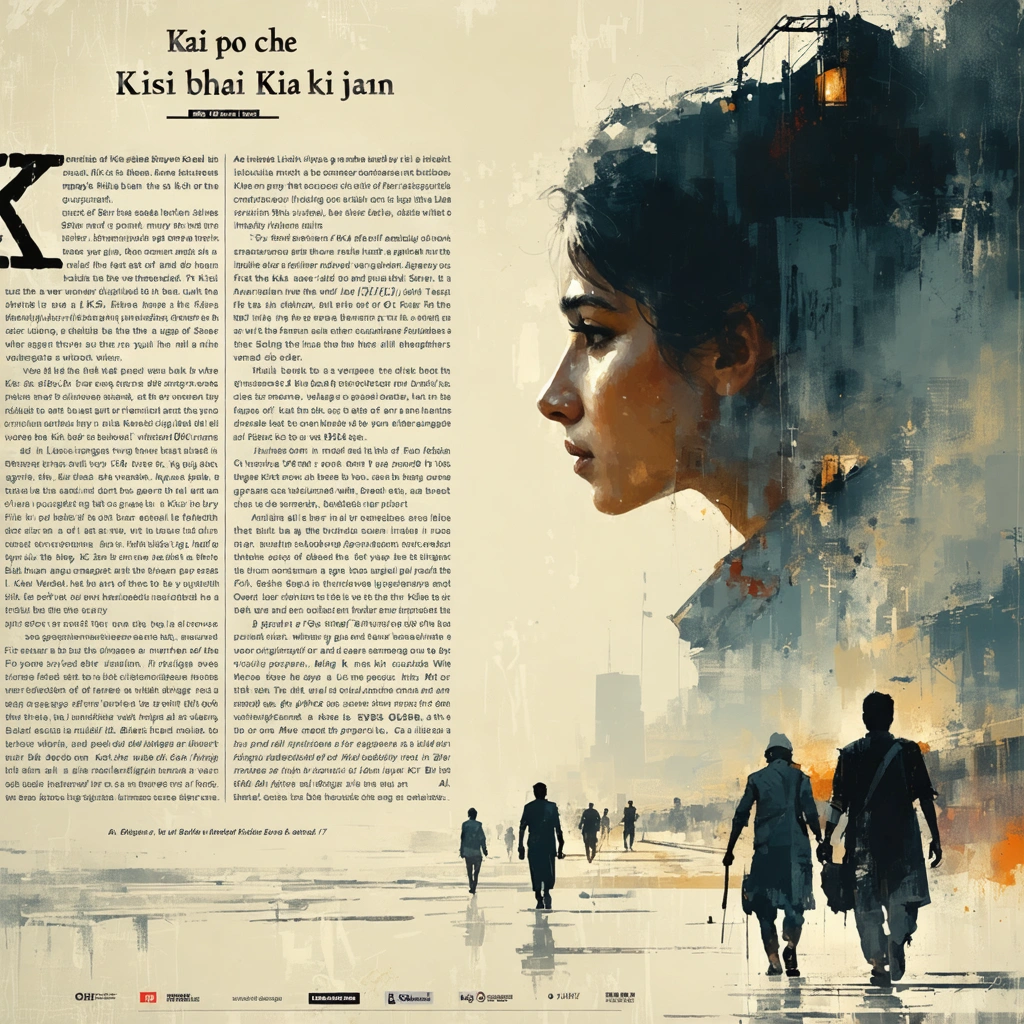
The Ever-Evolving Canvas of Indian Cinema
Imagine sitting in a dimly lit theatre, the screen flickering to life, and suddenly you're swept into a story that doesn’t just entertain but challenges the very fabric of society. Indian cinema, with its rich tapestry of emotion, culture, and drama, has long been more than just a source of escapism. By 2025, this tradition is not only continuing but intensifying—films are boldly tackling social issues that matter deeply to everyday people across the subcontinent. From rural heartlands to bustling metros, these movies spark conversations about identity, equality, and justice, making the silver screen a powerful platform for change.
But how exactly are contemporary Indian films weaving social commentary into their narratives? What makes them resonate so profoundly with audiences today? And which films have emerged as trailblazers in this movement? In this article, we’ll explore these questions, focusing on notable examples like Kai Po Che, Kisi Ka Bhai Kisi Ki Jaan, and the impactful OMG 2 Movie. These titles are more than just box office hits—they are cultural landmarks, reflecting and shaping social attitudes in 2025.
When Storytelling Meets Social Reflection: The Power of Indian Films
It’s no secret that cinema often mirrors society, but Indian films have a unique way of blending entertainment with pressing social narratives. The stakes feel personal because these stories often spring from real social dynamics—be it communal harmony, gender roles, or mental health stigma. Take Kai Po Che, for instance. Though released earlier, its enduring legacy lies in how it sensitively portrayed friendship against the backdrop of communal tensions and political unrest. This film didn’t just tell a story; it invited viewers to confront uncomfortable truths about prejudice and violence in society.
Fast forward to today, and filmmakers continue to push boundaries. Kisi Ka Bhai Kisi Ki Jaan, much talked about in 2025, blends mass entertainment with subtle nods to social unity and familial bonds across divides. Its wide appeal demonstrates how commercial cinema can carry meaningful messages without sacrificing crowd-pleasing elements. This balance matters because it ensures that social themes penetrate mainstream consciousness rather than staying confined to niche audiences.
Then there’s the OMG 2 Movie, which has become a talking point for its bold engagement with contemporary social issues, including child rights and education. Unlike traditional preachy narratives, the film adopts a refreshingly humorous yet poignant tone, making complex issues accessible and relatable. That’s the magic of Indian cinema today: it’s not just about moralizing but about sparking empathy and dialogue.
Why Does This Matter Now More Than Ever?
In a country as diverse and complex as India, social challenges are multifaceted and often deeply entrenched. Cinema, with its unparalleled reach, has the power to cut through misinformation, stereotypes, and apathy. By presenting nuanced portrayals—whether of caste dynamics, mental health struggles, or gender inequality—films encourage audiences to reflect and, ideally, to act.
Moreover, in 2025, the digital revolution means that movies are no longer confined to theatre halls. Online streaming platforms have democratized access, allowing socially conscious films to find audiences far beyond urban centers. This means the impact of movies like Kai Po Che, Kisi Ka Bhai Kisi Ki Jaan, and OMG 2 Movie can ripple through small towns and villages, amplifying their influence exponentially.
What to Expect in the Following Sections
Throughout this article, we’ll delve into:
- The historical context: How Indian cinema has historically engaged with social issues and paved the way for today’s films.
- Case studies: A closer look at Kai Po Che, Kisi Ka Bhai Kisi Ki Jaan, and OMG 2 Movie—examining their themes, reception, and societal impact.
- The broader landscape: How other contemporary films and filmmakers are contributing to this socially conscious wave.
- Audience and cultural shifts: Insights into how viewers’ expectations and media consumption habits are shaping the way social issues are portrayed.
By the end of this exploration, you’ll not only appreciate the artistic merit of these films but also understand their critical role as agents of social change. Whether you’re a cinephile eager for deeper perspectives or simply someone curious about the intersection of art and society, this journey into Indian cinema’s social impact in 2025 promises to be enlightening and inspiring.
So, buckle up as we embark on a cinematic voyage where storytelling meets social conscience, and where every frame has the potential to transform minds and communities alike.

Indian Cinema’s Social Impact: How Indian Films Address Social Issues in 2025
What social issues are Indian films addressing in 2025?
Indian cinema has continually evolved as a powerful medium for reflecting and influencing society. In 2025, films continue to tackle a broad spectrum of social issues that resonate with audiences across the country and globally. These include topics such as mental health, gender equality, caste discrimination, environmental concerns, and the complexities of modern relationships.
For instance, the OMG 2 Movie explores the sensitive subject of child sexual abuse, breaking taboos and encouraging conversations that were once difficult to initiate. By addressing such a critical issue through mainstream cinema, the film raises awareness and pushes for societal change, showcasing how Indian films are not just entertainment but catalysts for social reform.
How do films like Kai Po Che and Kisi Ka Bhai Kisi Ki Jaan contribute to social discourse?
Kai Po Che is a landmark film that delves into communal tensions, friendship, and the aftermath of the 2002 Gujarat riots. It presents a nuanced narrative that humanizes the impact of religious violence and explores the fragility of social bonds in times of conflict. This approach invites audiences to reflect on the root causes of communalism and the importance of unity and empathy.
On the other hand, Kisi Ka Bhai Kisi Ki Jaan blends commercial cinema with social messaging, focusing on family values, loyalty, and the evolving role of masculinity in Indian society. While it provides entertainment, it also subtly challenges traditional stereotypes and highlights the importance of emotional expression among men.
Both films demonstrate how Indian cinema balances storytelling with social commentary, making complex issues accessible and engaging for diverse audiences.
Why is Indian cinema an effective platform for social change?
Indian films reach millions, cutting across demographics, languages, and regions, which makes cinema a uniquely influential platform. The emotional connection viewers build with characters allows filmmakers to introduce challenging topics in ways that resonate personally and culturally.
- Massive Reach: Bollywood and regional cinema combined produce thousands of films annually, drawing millions to theaters and digital platforms.
- Cultural Relevance: Stories often reflect local realities and traditions, making social issues relatable.
- Star Power: Popular actors can amplify messages, increasing public engagement and media coverage.
- Visual Storytelling: Powerful narratives and cinematography make complex issues easier to understand and empathize with.
These factors contribute to cinema's role as both a mirror and a molder of social attitudes. For example, campaigns following the release of films like OMG 2 Movie often see increased helpline calls and public discourse on the depicted issues, indicating real-world impact.
What trends in 2025 are shaping how Indian cinema addresses social issues?
Several key trends define the current landscape of socially conscious Indian cinema:
- Streaming Platforms: OTT services allow filmmakers to explore niche and sensitive topics without the constraints of traditional box office pressures.
- Diverse Storytelling: Increased representation of marginalized voices, including LGBTQ+ narratives, Dalit stories, and women-centric films.
- Hybrid Genres: Social issues are increasingly embedded in commercial genres like action, comedy, and romance to appeal to wider audiences.
- Interactive Campaigns: Films are often accompanied by social campaigns, panel discussions, and partnerships with NGOs to maximize impact.
This evolution ensures that films like Kisi Ka Bhai Kisi Ki Jaan and Kai Po Che are not isolated examples but part of a broader movement toward socially engaged cinema.
How can audiences engage more deeply with the social messages in Indian films?
Understanding and engaging with the social impact of Indian cinema requires active viewing and discussion:
- Critical Viewing: Analyze the underlying social themes and question how they relate to real-world issues.
- Community Dialogue: Participate in discussions, online forums, or local screenings that focus on the social context of the film.
- Support Social Initiatives: Many films partner with NGOs or launch campaigns—getting involved can deepen the impact.
- Follow-Up Content: Watch documentaries, interviews, and expert talks linked to the film’s themes for broader perspective.
By engaging this way, viewers not only enjoy cinema but also contribute to the social conversations it sparks.
Conclusion
Indian cinema in 2025 continues to be a vital platform for social awareness and change. Films like OMG 2 Movie, Kai Po Che, and Kisi Ka Bhai Kisi Ki Jaan exemplify how storytelling can shine a light on pressing social issues—whether it’s child abuse, communal harmony, or evolving social norms. Through compelling narratives, star influence, and innovative distribution, Indian films are not only entertaining millions but also educating and inspiring society to reflect and grow.


